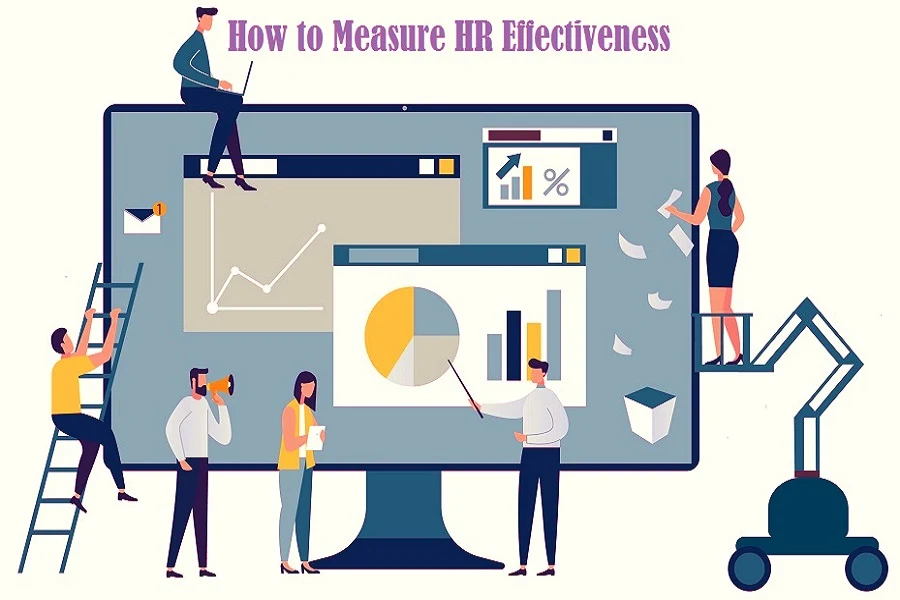Let's take a look at how to track pre-defined organizational goals of human resources management and how to identify the most important indicators and metrics for measuring HR effectiveness.
How to Measure HR Effectiveness: Developing HR
Key Performance Indicators (KPIs)
Processes of Human Capital
Formation
Human capital formation is
the process of adding to the human capital stock over time. Human capital
can be developed by creating a skilled, trained and efficient workforce and
providing better education, healthcare facilities, etc.
In order to properly
manage human capital, it is essential to develop actions that enable the growth
not only of organizations but also of professionals under the strategic,
tactical, and operational spheres. Highly skilled people can create new
ideas and production methods.
Indeed, the processes
inherent to human capital contribute significantly to the fulfillment of
internal goals and objectives, in the same way, they make it possible to
optimize the company's positioning in local, regional and global markets.
There is no good or bad
employee, but there is the right employee for the right position in the
company.
Employees are successful
in their work if they have the skills and motivation to perform all of their
duties. Assessing the employee's innate abilities and motivation is a good
start in ensuring that the right candidate is in the right position.
Employees do not leave
your company simply because they are offered better working conditions
elsewhere; they usually leave their boss.
Train your managers to
become better "coaches" or trainers, so that they help your employees
to discover and develop their full potential. In this way, they will be able to
give clear instructions, encourage good behavior, share their knowledge, give
constructive feedback, focus on solutions rather than problems, develop trust,
etc.
There is still one important
aspect that is missing: the team! Many companies have a disjointed work team
and do not guarantee equal treatment and opportunities.
How an employee fits into
the team is just as important, because it is through teamwork that we maximize
performance.
Human capital management
guarantees the use of all possible means to obtain the best from the employees,
as well as considering the adequacy of an individual with her team.
If your human resources
department wants to maximize your company's human capital and to ensure that it
recruits and develops the right people for the right positions, they must have
a vested interest in helping managers learn to manage human capital.
How can we expect to get
the most out of our employees and ensure optimal human capital management
without mutual trust and transparency? It is simply impossible! Those who sow
trust and transparency reap it in return.
You want to get the most
out of your employees: give them the opportunity, through trust and security,
to be themselves and reach their full potential!
How Do You Measure HR
Effectiveness?
Several
criteria can be used to measure the effectiveness of a human resource
department.
Top
indicators for measuring HR productivity and performance include: HR costs, HR
metrics, measuring internal efficiency and effectiveness of human resources,
and auditing HR compliance.
Key performance indicators (KPIs) are ideal metrics that companies can apply to measure
the performance of HR processes.
Key
performance indicators (KPIs) are a set of metrics that focus on the aspects of
organizational performance that are critical to current and future success.
KPIs are
rarely new to the organization, they are either not previously recognized or are
in a place neglected and unknown to the current management team.
There are
very few organizations realistically monitoring their performance indicators.
The reason for this is that these organizations, business leaders, accountants
and consultants know very well what performance indicators mean.
HR key performance
indicators must be tangible and meet a specific objective. They must also be
measurable, accessible data that provides relevant results.
To measure
the quality of Human Capital and HR effectiveness, the following could be taken
into account:
Employee Retention:
A good indicator of job
stability within a company is the retention capacity of staff.
The fact that there is
little rotation in the work team and that people decide to keep their jobs, not
only shows that the employee is comfortable with their work but other factors,
such as satisfaction with the remuneration they receive or the organizational
climate.
Investing Time and Money in
Recruiting:
Losing a talent within the
work environment will always force you to invest time and money in recruiting a
new employee.
The average time taken to
manage a new hire is measured from when an employee resigns or is fired until
his replacement is selected.
This process can be
optimized over time, but for this, it is advisable to have an updated database
of potential new candidates.
Training and Education:
Courses and training in
which employees participate to improve their attitudes and work tools could
also help improve productivity levels in the company.
Developing an effective
training strategy generates gratitude on the part of employees, reinforces
their levels of institutional commitment and therefore their satisfaction with
the work they perform in the company.
Key Result Indicators
(KRIs)
A key result
indicator (KRI) is a financial and non-financial measure used to help companies
track progress and reach organizational goals.
Key result
indicators (KRIs) are the result of a number of actions, and give a clear
picture of whether we are heading in the right direction or not, and they are
not useful in knowing what should be done to improve the results, so, they are
useful in giving information to senior management or boards.
Key result
indicators summarize activities, and financial performance measures are also
KRIs (for example, a daily or weekly sales analysis is a very useful summary,
but it is a result of the efforts of many teams).
KRIs cover a longer period of time than those of the KPIs, as they are reviewed at monthly or quarterly (quarterly) intervals rather than daily or weekly as is the case in the KPIs.

